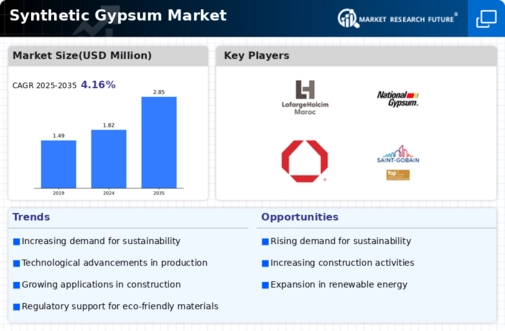Market Trends
Key Emerging Trends in the Synthetic Gypsum Market
In recent years the Synthetic Gypsum market has observed significant trends that reflect changes taking place in construction as well as manufacturing industries. One notable trend is increasing demand for environmentally friendly and sustainable building materials due to rising awareness about environmental issues. Another choice rather than the old-fashioned naturally occurring deposit-derived gypsum called synthetic gypsum is produced during various industrial processes.
One important reason behind this trend is growing concerns about ecological footprints from construction projects. This leads land degradation, habitat loss among others when mining mineral deposits occurs. Conversely, power plants utilize flue gas desulphurization (FGD) and phosphoric acid production systems generate a waste known as synthetic gypsum through industrial process generation system which does not require landfilling but recycling them back into industry reducing its environmental consequences.
Moreover, the construction sector has been using synthetic gypsum so as they can be LEED (Leadership in Energy and Environmental Design) certified for sustainability purposes. These certifications make companies think apart from using conventional natural gypsum towards alternative solutions like synthetic one which impacts environment lesser.
Furthermore, improved cooperation amongst different sectors is another relevant trend within the market leading to better ways of producing and utilizing synthetic gypsum by industries within an economy. In capturing and processing FGD gypsum, power plants are working together with gypsum manufacturers. In this way, these industries become closed loop systems whereby their industrial by-products are internalized within themselves, thus promoting sustainability as well as resource efficiency.
The rise of the Synthetic Gypsum market has been fueled by technology. Ongoing research and development have led to improved synthetic gypsum processing and refining techniques that meet end-users’ needs at lesser costs. Through these technological developments, issues regarding quality and consistency in synthetic gypsum have been addressed; hence they can be used similarly to natural gypsum for a wide range of applications such as construction, agriculture or manufacturing.







Leave a Comment